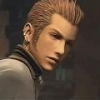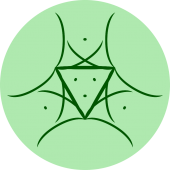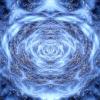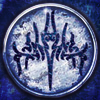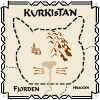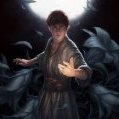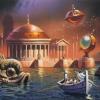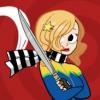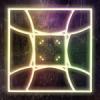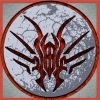Leaderboard
Popular Content
Showing most liked content on 07/30/13 in all areas
-
Words of Radiance Release Date Moved A bit dissapointing, but if the book is better because of that I don't mind waiting a bit longer.2 likes
-
So a prevailing belief at the moment is that Hoid is endeavoring to reform Adonalsium. With the recent revelation about the nature of Harmony, which I will be discussing further down, I no longer believe that reforming Adonalsium is possible. At least not in the way we are thinking. Hoid muses about taking things apart and putting them back together again when talking to Dalinar in Way of Kings. This is the quote a lot of people have been thinking supports the idea that Hoid is trying to put Adonalsium together again. The line “into something like them—yet wholly unlike them at the same time” has led some people, and now myself, to question whether reuniting all of the Shards would recreate Adonalsium. In this theory I will be arguing the negative, bringing the Shards together will not remake Adonalsium. (in a potentially roundabout way that may make absolutely no sense) For the purposes of this thread I will be referring to Adonalsium as if it was a sheet of glass as a nod to the Shardic Lens theory. So, originally there was an unbroken pane of glass through which the power of creation shone. Then for some reason it shattered, creating sixteen Shards. Each has a different intent that filters the light that shines through them, kind of like a distinct color. At the tail end of AMA Brandon answered this question: This quote has blown the minds of a fair number of people, including mine. Before I get to the point I am making, I want to add another quote that shows that even though Harmony is the Shard, Ruin and Preservation still exist. It is my opinion that Ruin and Preservation have become cognitively linked, they have begun to see themselves as part of a greater whole, Harmony. Like Shai describes in the following quote. So what’s my point? The two pieces of glass that are Ruin and Preservation haven’t come together and made a larger piece of glass. They’ve just been soldered together. If that is true for these two Shards I can’t see any reason why having all sixteen would make any difference. Rather than making the pristine sheet of glass that was Adonalsium, they would instead make a stained-glass window. Hopefully this makes since to someone other than myself. Quotes in order of appearance -Way of Kings: Chapter 54 -2013 Reddit AMA -Nov 21 2011 Alloy of Law Signing Report - Lord Juss -The Emperor's Soul: Day Twelve Edit: This section is based in part on Chaos’ Devotion, Dominion, and Convergence Theory. In his theory Chaos describes the concept of “fragments” of shards and differentiates them from Splinters. In regards to my stained-glass metaphor they would both be pieces of glass from their respective Shard but are differentiated by their clarity. Splinters would have the same clarity as the parent Shard while fragments would have be more like frosted glass, transmitting the light in a more diffuse manner. What makes one frosted while the other is clear you’re asking? In my opinion it has to do with the relative strength, for lack of a better term, of their cognitive aspect. The “strength” of the cognitive aspect has to do with its ability to think for itself, a person has a stronger cognitive aspect than a rock for example. But wait! Splinters aren’t sentient. No they are not, but all of the splinters we have seen are attached to something that does have a strong cognitive aspect (i.e. the Returned and the Seons). A strong cognitive aspect helps to focus, and control, the light that is coming through the glass. It is important to remember though that these fragments still have a cognitive aspect to them, not a very strong one, but it is there and helping with the “convergence,” as Chaos put it, of the two shards. In my opinion the history, or rather memories, of an object are a part of its cognitive aspect (supported by the fact that feruchemical copper is a cognitive metal). These fragments can remember being part of something larger and want to be a part of it again (like the wall Shai forged to be painted wanted to be beautiful). It actually has memories of being a part of two things, its respective shard and adonalsium. So if a fragment of Devotion met up with a fragment of Dominion it would be like “You’re different from me but we used to be together so let’s hang out.” It is somewhat similar to Ruin and Preservation but in their case they have Sazed and the people of Scadrial to help for a cognitive leading for the pieces of glass.1 like
-
I know this is a bit provocative, and a lot of people agree with Jasnah. I'd like to provide a basis to argue that we know the parshmen can't be voidbringers. Jasnah's theory is that the Parshmen will become suddenly violent, quickly bringing civilization to its knees because they are everywhere and they are trusted to be docile. There's a lot to support this: -it would work; they are everywhere and their sudden revolt would subdue civilizations -the evidence she presents points strongly towards them But I suggest the following facts contradict it: -there were several Desolations -over the course of the Desolations, the Knights Radiant were a constant, present for all of them regardless of the state of civilization as a whole. So in order for Jasnah to be correct, this sequence of events would have to repeat itself: -A desolation begins -After the desolation, civilization is in ruins -the people, noticing that the voidbringers are now defeated and docile, put them to work -over time, the people forget that the docile voidbringers were ever a threat -a new desolation begins Here's why this theory is unlikely: -the Radiants were still there. They lasted through several Desolations. Their institutional memory would cause them to recognize that "hey, enslaving the Voidbringers has turned out badly... let's see... 6 times now. NO MORE VOIDBRINGER SLAVES YOU GUYS!" and that's why Jasnah's theory is incorrect. In the interest of being fair and thorough, here are the ways this theory could prove false: -humans hadn't enslaved the parshmen before, they emerged in some other way during the previous Desolations (But I think Jasnah's theory strongly implies that she believes that the cycle is repeating exactly as it did before) -The Radiants were wiped out every time, and had to be re-founded every time, allowing them to forget -The Radiants were guilty of massive hubris every time, thinking "This time they are surely subjugated forever" -The Radiants kept quiet about the whole thing, because for some reason they wanted the Desolations to repeat.1 like
-
I shall let Michael Whelan and his art speak for itself: http://www.tor.com/blogs/2013/07/brandon-sanderson-words-of-radiance-cover-reveal-michael-whelan1 like
-
Interesting thought Windborne, but since anybody burning lerasium (not an alloy) would become a mistborn (whether misting, mundane, or feruchemist), and mistborn and atium mistings burn atium, I suspect that burning atium would not to anything outside of what we know. That is not to say that there may be some other means of doing something special with atium. Its god-metal status may be accounted for in it's universality for hemalurgy. Thus, I would posit that a lerasium spike would not be hemallurgically viable or at least would not share atium's universality (it could only be used to spike one attribute from feruchemy or one from allomancy). In other words, lerasium is universal in allomancy, in that it grants the ability to burn any allomantically viable metal. This is because allomancy is sourced from Preservation and lerasium is a pice of the body of Preservation. In comparison, atium is universal in hemalurgy, in that it can be used to take any attribute hemalurgically. This is because hemalurgy is sourced from Ruin and atium is a portion of the body of Ruin.1 like
-
Metals burned on Scadrial reform in the earth somehow. I have been assuming the Tears are a way to get back the colors used in Awakening. If that is the case, there very well could be some shardic mojo going on that only lets them grow in a certain location.1 like
-
Speak for yourself, man. Personally, I'd infinitely prefer a terrible book This Very Instant.1 like
-
There is some small Sliver of hope hidden at the bottom of a chasm, though I'm not holding my Breath. Brandon Sanderson WORDS OF RADIANCE is moving to March. But this is still subject to change. I will decide when revisions are done. Link1 like
-
There seems to be more complaining about this awesome cover than excitement. I hope this changes because I am a little disappointed by fan reaction here so far and was looking forward to more people as truly excited as I am. I mean it looks to be a fight scene between Kaladin and Szeth. How awesome is that.1 like
-
Remember in Dalinar's flashback where he meets the two Knights Radiant? One of them uses 'Three Gods' as a curse. Presumably, all three were known of (not necessarily worshipped) in the past - or maybe were worshipped by different peoples. Look at the difference between 'rule' and 'reign'. There's a subtle difference - as I've said before, the Queen of England reigns but does not rule, because she has no real constitutional power. In the same way, I think in the past, all Three Gods were worshipped - so all three ruled. Now, however, Honor appears to be worshipped by the major world religion, Vorinism, and its offshoots - yet Honor is splintered and cannot exercise his power (presumably since he doesn't have a mind to do so) - and so 'reigns'.1 like
-
I'm fine with some character building and instrospection, but the first few pages come across as too much. It feels like you're trying to cram all the backstory you couldn't get it earlier to these pages. For example, you could have dropped a sentence in earlier that her aunt used to be the head priestess, and use it as a reference here, to make the introspection stronger. pg 4: "She wasn't prepared at all for what stood on the other side of that door." --This is a bit too much of a "And then she..." It seems artificial. I would take out this last line and let the tension of her going into the room stand by itself. We know something's going to happen. pg 5: "even the twinge of pain in his hip forcing him to limp went unnoticed." --it's not unnoticed if you just called it out. pg 5: "He would have to lit a fire in his chambers if he ever wanted not to be turned into an icicle" --this sentence is awkward and passive (also light for lit). There are some other senteces like this as well--watch for them when you edit. pg 5: "As much as he distasted antagonising his head priestess" --disliked pg 12: I get the feeling Mahau is crawling along the floor because of the time shroud and he's moving in slow motion, but you never really say this, and you don't say he ever sped back up. I was also a little confused that no one recognized anyone else. a little more shroud description would be good. pg 14: "She was usually the strong one and seeing her frightened like this disturbed Mahau more than he could explain." --Watch for telling instead of showing. There's a bit of it in this chapter, especially around Neda. pg 16: "Mahau soon noticed the dagger buried deep in the assassin's side." --wait, so the god with half his body cut away needs to/can stab himself with a dagger and kill himself? First, if the cutting away half his body hasn't killed him, I don't think a dagger will do it. Second, I doubt he's going to be able to even move, or he would have aimed the dagger at Mahau. pg 17: Why doesn't Mahau know what the other gods look like? This seems a very bad position to be in, especially if the gods fight each other all the time. Overall, a good chapter. I like the progression of the story. We now know about all the missing gods, and the plot has thickened. The middle action of this chapter drew me in and captured my attention. There were some minor things, but nothing detrimental to the story as a whole. It's a good end to the first act. I was going to say I was looking forward to finding out more, but then read that you plan to stop posting. It is harder to get good comments on the middle and later portions of books, especially if people haven't read the first part (as I found out myself with Seeds of Dissolution), but at the same time, I think if, as a forum, we can keep interest in a book going all the way through then it will give some better comments on the overarching plot. I know posting an entire book will take ages, but what would others say to posting summaries or specific chapter segments to help critique character arcs, plots and endings? ...I may need to make this a poll or some such. This is probably not the right place to bring it up!1 like
-
Ah. I'm sad your stopping to submit this. I only started reading in the last few chapters and with this last installment you really caught my interest. I really like the combat system of the shrouds. It felt very different from things I've read before, but it is easy to visualize so doesn't drag on. One thing I found a bit odd although it was eventually explained is that nobody recognises anyone else in the scene. Mahau opens the door to his room and sees a women lying on his bed but he doesn't recognise Neda she doesn't realise its him when he is on the floor and they don't recognise their attacker is the missing god till right at the end. The idea of the shrouds distorting things works but I think it could do with having attention drawn to it. If you just indidcate that Mahau can't see the figure on the bed clearly because of a faint haze or something like that then that would avoid the confusion. Unless you mentioned that shrouds do that in an earlier chapter and I just missed it in which case it's fine.1 like
-
I like a lot of your books. You have good taste. Also, Josh and I have too many bookshelves to take a picture of each of them. (Seriously. We have four that I can see just where I'm sitting. Six if I move a little bit. And those are just in the front area of the apartment.) However, considering what site this is, we figured we'd show you the "good stuff":1 like
-
If you read closely through WoK, there are several places that imply that waves/sound is magically important. When we see Jasnah soulcast the boulder, Shallan imagines that she can hear a "single, perfect note" just as it transforms. Later, she finds some books that mention that humming can facilitate soulcasting using fabrials. Also - anyone notice how a basic soulcaster, that can do one thing only, has a single gemstone (the one we see the Ghostblood use to make the wall turn into smoke), while the greater ones have three gemstones that can be swapped out? And remember how Kabsal tells Shallan that to use a soulcaster, you just touch what you want to change and tap the gemstone? Anyone else think this sounds (no pun intended) like a musical instrument? For a single note (essence) you tap a single key/gemstone. For a more complex object consisting of multiple essences you tap a combination of notes, thereby making a chord. Of note, most chords in music are made from three notes. I just had to look all this stuff up on wikipedia since I have the musical knowledge and skill of a tugboat, but I'm sure someone with more knowledge will take up the thread.1 like
-
This is a very well-thought-out theory, so props to you, Weiry. I think your theory is quite plausible. That said, I don't think the two schools of thought are inherently mutually exclusive. Take your analogy of the stained glass window: the pieces are united into a whole, just not the way they once were. In the end, the difference is in what form the finished product will take: the stained glass window, or the pristine sheet of glass. Yes, Ruin and Preservation have intermingled, but that didn't happen instantly. It's been centuries in Cosmere Time since Sazed took them up, and we have no idea how long it took for them to reach their quasi-fused state, nor do we know if they're finished with the process or still undergoing it. Therefore, I believe that if someone were to take up all sixteen Shards, the initial result would be the stained glass window. However, over time, and potentially depending on the individual who took them up in the first place, we might wind up with the sheet of glass. It would just take a while, to say the least.1 like
-
Honestly, my understanding about Hoid's question to Dalinar was that he is struggling with the very same issues you are in this topic. For your analogy: If all sixteen shards are combined does it become a stained glass masterpiece like the one before -or- would it become a hideous mass of twisted glass and intermingling colors that resembles nothing of the original window -or- could you make it into something else more to your liking, i.e. could you control what the resulting intent of the supershard you create would be?1 like
-
I really like this theory and I think it is very plausible. One additional point to add has to do with my own theory regarding Harmony's power - I personally believe that Sazed's informed choice to use the two Shards together, as if they were a single unified Shard, was what ultimately brought about the merging/combining of the two. It stands to reason, then, that if an entity with a cognitive aspect were to successfully take all of the Shards but choose not to wield them as a unified entity, the Shards would remain separate and their Intents would destroy the holder.1 like
-
I get where you're coming from, but suggest,an alternative theory. Rather than creating a patchwork of the window, what if the time spent together has actually caused the glass to melt and merge? They become more inextricably linked then. Theoretically possible to separate, but not easily done. This would also create a window very different from the original. For the record, I actually find your idea more plausible and intuitive, given the example of the table which is still obviously constructed from different components, and the above quote stating that harmony is still, in fact, two shards.1 like
-
If we are wrong about something far more fundamental, like what the Voidbringers are or whose side they fight on or why (my position), then it doesn't matter how early it is in the plot. I actually found the very quotes you consider to be evidence against her theory to be some of her prime evidence in favor of it. I suspect she did, too. After all, the annotations in the book are from her notebook; Shallan sees it in passing at one point, and at the end, it is that notebook that Jasnah uses to prove her case to Shallan. (Incidentally, that she was able to prove it to Shallan should prove that she has more than the meager pieces you left her.) For instance: suck in light: They have black skin The voidbringers are said to be fire and shadow: red and black skin The voidbringers are described as changing their shape: That would be the change from Parshmen to Parshendi The records are quite clear that the fire is real: Why? If it is a translation of a translation, things like that can be easily lost, especially if the translators don't understand what they are translating that they sing: I hope the reference is obvious. Singing while one fights seems kind of distinctive No, I don't think Jasnah is ignoring anything in these particular quotes. She is treating them as reflections of reflections, which is appropriate. The only question is a question of size. That is a dangling thread, but I don't really believe that we have the whole answer. I just think that Jasnah isn't completely wrong, either. Good questions. The number of things that don't make sense is Rosharian pre-history is still quite large, though. Just add these to the list. This one is a stretch. I agree that the Parshendi culture has some oddities to it which make it unlikely they are inherently bad guys, but that's not the same as saying that Jasnah is wrong. Possible, but I personally hope that the connection is more complicated, and that Jasnah is more right than wrong, but still wrong about something important!1 like
-
Honor dies the first time Odium comes after the Oathpact is broken. Maybe, as suggested in this thread, the Ten Heralds are the holders of various parts of Honor's shard. When the Oathpact is whole, Honor's shard is bound together and can be wielded by the shardbearer, the Almighty. Because the Oathpact is broken, the Almighty's power is reduced, and can be killed by Odium when he comes back to Roshar for "the true desolation". Also, I got the impression that the visions Dalinar received were like some sort of prerecorded message. Like voicemail: "I'm sorry, but Honor is currently dead. If you need to fight Odium, try getting him to appoint a champion. If you need to unite the Alethi Highprinces, please contact Dalinar Kholin. If you need someone killed, please contact Szeth-son-son-Vallano. If you need someone to stare at a lighteyes really angrily, contact Kalidan Stormblessed. Thank you for your patience."1 like
-
I'm thinking Voidbringers are not a single creature but a generic term for the forces of Odium. Or they're one creature in the same way that the Zerg are one creature, with Thunderclasts, Midnight Essences, and Parshendi all being various forms of the same kind of creature. There was some mention of their forms changing like smoke, which would fit with that and explain where all the non-Parshmen ones went. Loony theory forming: The Parshmen are Voidbringers, but the Parshendi are actually their Honor-backed opposite numbers.1 like
-
when Kalak mentions dustbringers, i'd always got the feeling, at least after reading the entire book, that they were an order of knights, not an enemy. the way he says it, "the dustbringers had done their work well," seems like someone reflecting on his allies efforts. sort of a "well done, dustbringers" thing. otherwise, i think your reasoning is sound there, GHM. voidbringers seems to be linked directly to desolations in the modern mind, as if desolations only brought voidbringers, which we know is untrue. as a catch-all term, it works.1 like
-
1 like
-
I find myself vacillating on this the more I think about it. One of the problems is that the histories that Jasnah is going through are fragments of quotes of earlier works or descriptions of earlier works about something that hasn't be fought in 4500 years... aside from the Heralds and Knight Radiant people in that day were: At a very low level of development, and we know that before the Last Desolation is called "before history began" a number of times in the book, maybe because it did start, but was wiped out everytime a desolation began, but for whatever reason recorded history for Roshar doesn't got back all that far, relatively speaking, and what does is fragments of fragments. So Voidbringer may be anything from that earlier time period, or even nothing. Jasnah looks a drawing of a Chasm fiend that is labeled 'Voidbringer', but her research makes her conclude that the label is wrong and Parshmen are the Voidbringers. We seek in the Prelude and some of Dalinar's visions that the 'thunder clast' is a huge beast made of stone that rips itself free from the earth. So likely a Chasm Fiend is the closest anyone can get to a drawing of a 'thunderclast' but that is then confused and conflated with a single term "voidbringer". At the beginning Prelude, Kalak the Herald says that "the Dustbringers had done their work well"... I think what his happening or happened is that there were many creatures fighting against people/Heralds/Radiants in the desolations, the thunderclasts, the shadow creatures a Radiant calls "Midnight Essences", the Dustbringers, and maybe even something separate called the Voidbringers, but only one of those terms has survived to this time and so we get a conflating of enemies into a catchall term. As I think more about it, I probably agree with the main premise of this theory, but disagree with the specifics. I do think that the Parshmen are NOT Voidbringers, but I do think they are/were part of Odium's armies against Honor/Heralds/Radiants/People, I think they were more the footsoldiers aka Dustbringers, thunderclasts would be like Heavy Cavalry, Midnight Essences would be infiltrators/scouts, and Voidbringers will end up being the leaders, similar to the Knights Radiant or some such...1 like
-
I might be mistaken here just read thru, i don't think it says in the book that people ha parshmen servants during the times of desolations and the radiants, the plan for the final one to work I think involved waiting long enough until humanity forgot all about it and crumbled easily, using the parshmen works perfectly in this plan. Wait until nobody knows what voidbringers are, introduce a load of your soldiers on timers or musical triggers or summit and let them become slaves completely ingrained in every bit of human society. That being said I do like the idea, just saying afaik I think they coulda introduced parshmen after the radiants and desolations and all that had been forgotten1 like
-
-1 likes
This leaderboard is set to Los Angeles/GMT-07:00

